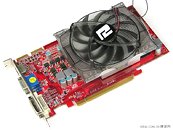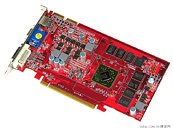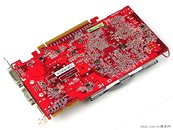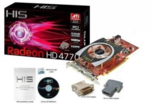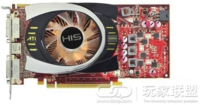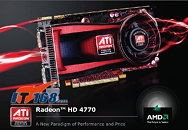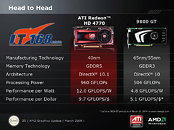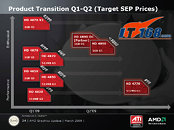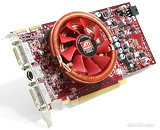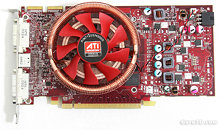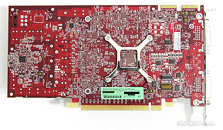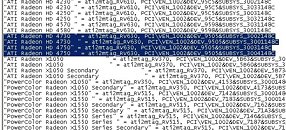
AMD Juniper Early Specs Surface
Earlier talked about as being a mere speed bump over RV740 that probably locks horns with Radeon HD 4850 or even HD 4870 512 MB in terms of performance in today's applications, Juniper, codename for AMD's newer mainstream GPU that is looking to handle things under the $200 segment, is looking stronger than thought about before on paper, according to recent publication by Anandtech. Breaking away from the previous conception of a GPU with 800 stream processors, a 128-bit GDDR5 memory, and most other vital-stats resembling its ancestor, the report suggests something that's at least 75% as powerful as Cypress.
It is said to feature 14 SIMD blocks, which going by Cypress' architecture would imply 1120 stream processors (14 x 80 SPs). The report also hints at a stronger memory sub-system to keep up. Instead of a 128-bit wide interface, it hints at 192-bit, GDDR5 at that. This part doesn't seem convincing, as earlier pictures of the card showed it to be holding four memory chips on the reverse side of the PCB, with no fuses to show memory chips that aren't sharing memory channels. Accelerators with 192-bit wide memory interface, should have 6 or 12 memory chips typically. Other numbers include 56 texture memory units (TMUs), and 24 raster operation units (ROPs), if there is a 192-bit memory interface. Two accelerators based on the GPU, Radeon HD 5770 and Radeon HD 5750 should be out around the same time Windows 7 hits retail. Both target sub-$200 price points.
It is said to feature 14 SIMD blocks, which going by Cypress' architecture would imply 1120 stream processors (14 x 80 SPs). The report also hints at a stronger memory sub-system to keep up. Instead of a 128-bit wide interface, it hints at 192-bit, GDDR5 at that. This part doesn't seem convincing, as earlier pictures of the card showed it to be holding four memory chips on the reverse side of the PCB, with no fuses to show memory chips that aren't sharing memory channels. Accelerators with 192-bit wide memory interface, should have 6 or 12 memory chips typically. Other numbers include 56 texture memory units (TMUs), and 24 raster operation units (ROPs), if there is a 192-bit memory interface. Two accelerators based on the GPU, Radeon HD 5770 and Radeon HD 5750 should be out around the same time Windows 7 hits retail. Both target sub-$200 price points.

